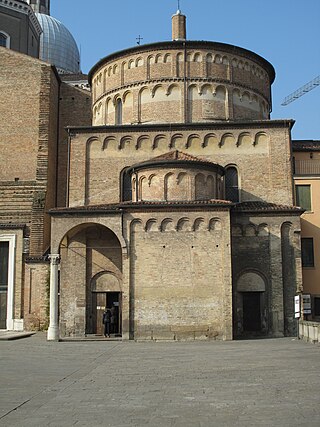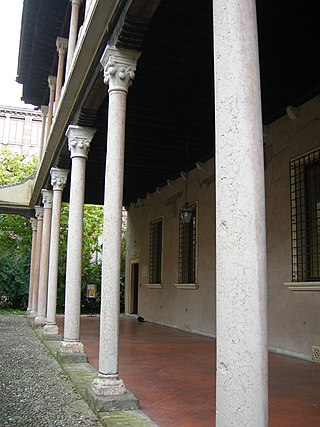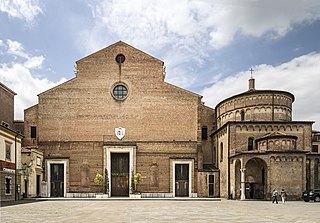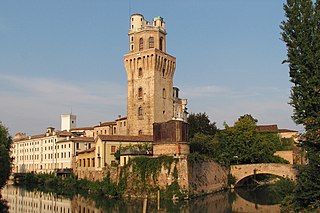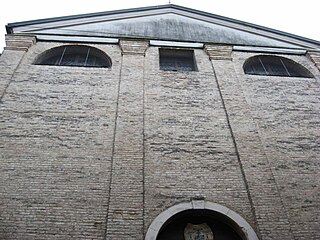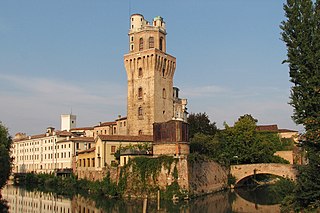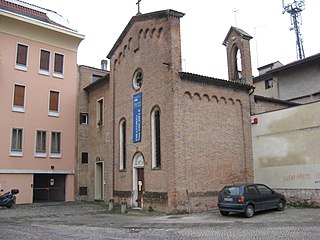Self-guided Sightseeing Tour #2 in Padua, Italy
Legend
Guided Free Walking Tours
Book free guided walking tours in Padua.
Guided Sightseeing Tours
Book guided sightseeing tours and activities in Padua.
Tour Facts
9.2 km
121 m
Experience Padua in Italy in a whole new way with our free self-guided sightseeing tour. This site not only offers you practical information and insider tips, but also a rich variety of activities and sights you shouldn't miss. Whether you love art and culture, want to explore historical sites or simply want to experience the vibrant atmosphere of a lively city - you'll find everything you need for your personal adventure here.
Activities in PaduaIndividual Sights in PaduaSight 1: Porta Ognissanti
The Porta Ognissanti is one of the gates still existing within the sixteenth-century walls of Padua, built by the Serenissima Republic.
Sight 2: Museo della Fisica Giovanni Poleni
The Museum of the History of Physics is located at the Department of Physics and Astronomy "Galileo Galilei" of the University of Padua. The museum preserves a collection of ancient scientific instruments closely linked to the scientific past of the University of Padua, which since the eighteenth century has been characterized by innovation and experimental vocation.
Wikipedia: Museo di storia della fisica dell'Università di Padova (IT), Website
Sight 3: Cappella Ovetari
The Ovetari Chapel is a chapel in the right arm of the Church of the Eremitani in Padua. It is renowned for a Renaissance fresco cycle by Andrea Mantegna and others, painted from 1448 to 1457. The cycle was destroyed by an Allied bombing in 1944: today, only two scenes and a few fragments survive, which have been restored in 2006. They are, however, known from black-and-white photographs.
Sight 4: Church of the Eremitani
Get Ticket*The Church of the Eremitani, or Church of the Hermits, is a former-Augustinian, 13th-century Gothic-style church in Padua, region of the Veneto, Italy. It is also now notable for being adjacent to the Cappella Scrovegni with Giotto frescoes and the municipal archeology and art gallery: the Musei Civici agli Eremitani, which is housed in the former Augustinian monastery located to the left of the entrance.
Sight 5: Scrovegni Chapel
The Scrovegni Chapel, also known as the Arena Chapel, is a small church, adjacent to the Augustinian monastery, the Monastero degli Eremitani in Padua, region of Veneto, Italy. The chapel and monastery are now part of the complex of the Musei Civici di Padova.
Sight 6: Musei Civici agli Eremitani
The Civic Museums of Padua, also known as the Civic Museums of the Eremitani, are a museum complex located in Piazza Eremitani in the city of Padua.
Sight 7: Palazzo Zuckermann
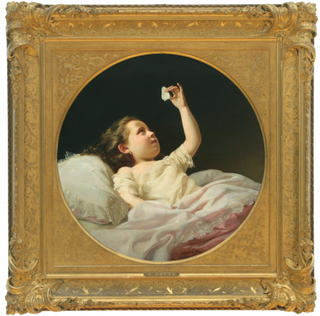
The Palazzo Zuckermann is a palace located on corso Garibaldi in Padua, Italy. The building now houses the collections of the Museo di arti applicate e decorative on the first floor and the Museo Bottacin on the second floor; these collections form part of the Civic Museum of Padua. It stands across the street from the Cappella degli Scrovegni and the Museo agli Eremitani; the latter houses the main art gallery of the civic Museum of Padua.
Sight 8: Museo Bottacin

The Palazzo Zuckermann is a palace located on corso Garibaldi in Padua, Italy. The building now houses the collections of the Museo di arti applicate e decorative on the first floor and the Museo Bottacin on the second floor; these collections form part of the Civic Museum of Padua. It stands across the street from the Cappella degli Scrovegni and the Museo agli Eremitani; the latter houses the main art gallery of the civic Museum of Padua.
Sight 9: Chiesa di San Fermo
The church of Saints Fermo and Rustico, better known as the church of San Fermo, is a religious building of early medieval origin that overlooks Via San Fermo in Padua. It is to be counted among the oldest in the city. Formerly a parish, it became subject to the parish of San Leonardo for a period; now it is a subsidiary church to the Basilica del Carmine, officiated on holy days of obligation by the Sri Lankan Catholic community. It is currently devoid of all works and furnishings.
Sight 10: Porta di Ponte Molino
The Porta Molino or Porta dei Molini was the main of the four royal accesses that opened into the medieval walls of Padua. Facing north, it rises at the end of the Roman Ponte Molino which crosses the branch of the Bacchiglione called Tronco Maestro where until 1884 thirty-three wheels of as many mills mounted on boats worked, from which the gate and the bridge take their name.
Sight 11: Teatro Giuseppe Verdi
The Teatro Verdi is a theater and opera house in Padova, Italy named after composer Giuseppe Verdi. Constructed in 1749–1751, the theater was inaugurated in 1751. It was modernized in 1884.
Sight 12: Oratorio San Rocco
The Oratory of San Rocco is a Renaissance style, Roman Catholic church located in the city center of Padua, region of Veneto, Italy. It arises adjacent to the church of Santa Lucia, and is notable for its collection of frescoes.
Sight 13: Santa Lucia
Santa Lucia, also called the Chiesa dell'Adorazione Perpetua is a Roman Catholic church located in the city of Padua, region of Veneto, Italy.
Sight 14: Porta Altinate
The Porta Altinate or Porta di Ponte Altinà was one of the four "regales" entrances that opened onto the municipal walls of Padua. The gate rises on the first pier of the Roman Ponte Altinate - now not visible - which crosses the Naviglio Interno buried in the sixties of the last century to make room for the Via Riviera dei Ponti Romani. The gate and the bridge - as well as the following district - take their name from Altino, the city towards which the road to which they gave access was directed. The gate is a popular pedestrian walkway to Piazza dei Noli, now Garibaldi.
Sight 15: Chiesa di San Gaetano
The Church of San Gaetano is found in the central district of Padua, and its facade was designed by the late Renaissance architect Vincenzo Scamozzi.
Sight 16: Scuola della Carità
The School of Charity of Padua is a medieval building that since the first decades of the fifteenth century was the headquarters of the Confraternity of Charity, a secular congregation dedicated to devotional and welfare activities, up to the beginning of the nineteenth century. The complex is used for cultural activities.
Sight 17: Chiesa di San Francesco
The church dedicated to saint Francis of Assisi, known for centuries as San Francesco Grande is a religious building on the Via San Francesco, previously overlooks the Contra porteghi high in Padua, Italy. Through the efforts of Baldo de Bonafarii and Sibilla de Cetto, the convent of the Friars Minor and the Hospital of Saint Francis, Major, operated until 1798.
Sight 18: Chiesa di Santa Margherita
The church of Santa Margherita is a religious building of medieval origin that overlooks Via San Francesco, in Padua.
Sight 19: Museo di Storia della Medicina in Padova (MUSME)
.jpg)
The Museum of the History of Medicine of Padua (MUSME) is a museum open to the public since 2015 and located inside the ancient Hospital of San Francesco Grande, next to the church of San Francesco Grande in Padua. The museum, through its interactive tools and collections, illustrates to the public of all ages and education the evolution of medical science over the centuries, with particular reference to the history of medicine at the University of Padua, one of the most important medical schools in the West.
Sight 20: Palazzo Zabarella
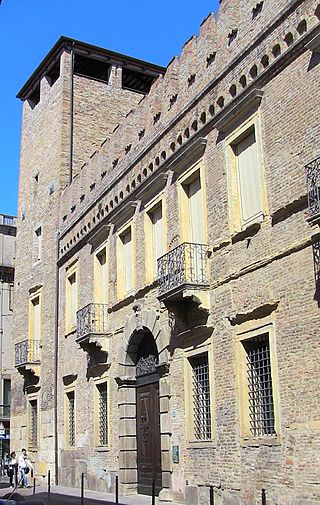
The Palazzo Zabarella is a medieval, fortress-like palace with a crenellated roof-line, and corner tower, located on Via San Francesco 27 in the center of Padua, Italy. The building now houses the Fondazione Bano, and serves as a locale for cultural events and exhibition.
Sight 21: Tomba di Antenore
The Tomb of Antenor, also called the Sepulchre of Antenore, is a 13th-century monument created to honor an unearthed ancient sarcophagus, claimed to be that of the Trojan warrior and counselor Antenor, the legendary founder of Padua; it is located in Piazza Antenore, in Padua, region of Veneto, Italy.
Sight 22: Ponte San Lorenzo
Sight 23: Chiesa di Santa Maria dei Servi
Santa Maria dei Servi, or simply known as the Chiesa dei Servi, or more fully as the Church of the Nativity of the Servants of the Blessed Virgin Mary, is a 14th-century, Roman Catholic church that faces the Via Roma in Padua, region of the Veneto, Italy. This is a parish church in the vicariate of the Cathedral Basilica of Santa Maria Assunta governed by the Servite Order. The church contains outstanding works of art including a wooden crucifix by Donatello.
Sight 24: Sinagoga
The Padua Synagogue, also called the Great Italian Synagogue in Padua, is an Orthodox Jewish congregation and synagogue, that is located at San Martino e Solferino 9, in Padua, Veneto, Italy. Completed in 1548, it is the only synagogue still in use of the several that flourished in the university town of Padua from the Renaissance through World War II.
Sight 25: Chiesa di San Canziano
The church of San Canziano is a religious building of medieval origin that stands in the center of Padua, towards Piazza delle Erbe. It is currently a rectory entrusted to the Legionary priests of Christ. At this time, it is officially the only church in the diocese of Padua where Mass is celebrated on Sundays and holy days of obligation, in the traditional form of the Roman rite.
Sight 26: Caffé Pedrocchi
Get Ticket*The Pedrocchi Café is a café founded in the 18th century in central Padua, Italy. It has architectural prominence because its rooms were decorated in diverse styles, arranged in an eclectic ensemble by the architect Giuseppe Jappelli. The café has historical prominence because of its role in the 1848 riots against the Habsburg monarchy, as well as for being an attraction for artists over the last century from the French novelist Stendhal to Lord Byron to the Italian writer Dario Fo.
Sight 27: Chiesa di Sant'Andrea
Sant'Andrea is a Roman Catholic church located on Via Sant'Andrea in Padua, region of Veneto, Italy. Founded by the 12th-century as a parish church, the present church was completed in the late 19th century.
Sight 28: La Gatta
The cat of Sant'Andrea, popularly called the cat, is a monument of medieval origin located in the small churchyard of the church of Sant'Andrea in Padua. The monument, composed of a stone sculpture depicting a lion placed on an Roman age column, was shot down on 23 September 2013 by a means of transport in maneuver and relocated on March 19, 2015.
Sight 29: Palazzo della Ragione
Get Ticket*The Palazzo della Ragione is a medieval market hall, town hall and palace of justice building in Padua, in the Veneto region of Italy. The upper floor was dedicated to the town and justice administration; while the ground floor still hosts the historical covered market of the city. The palace separates the two market squares of Piazza delle Erbe from Piazza dei Frutti. It is popularly called "il Salone" . It is part of the UNESCO World Heritage Site of Padua's 14th-century fresco cycles.
Sight 30: Chiesa di San Clemente
San Clemente, or St Clement, is a Baroque-style Roman Catholic church that overlooks the Piazza dei Signori in Padua, Italy. It is currently a dependent of the Cathedral Basilica of Santa Maria Assunta.
Sight 31: Chiesa di San Nicolò
San Nicolò is a Romanesque and Gothic-style, Roman Catholic church in Padua, region of Veneto, Italy. It stands in front of a homonymous piazza, and is adjacent to the Palazzo Meschini and Palazzo Brunelli-Bonetti.
Sight 32: Torre dell'Orologio
Get Ticket*Torre dell'Orologio is a clock tower located in the Piazza (Plaza) Dei Signori and positioned between the Palazzo (Palace) del Capitanio and the Palazzo dei Camerlenghi in Padua, or Padova, Italy. It is also referred to as the astronomical clock of Padua.
Sight 33: Loggia della Gran Guardia
The Loggia del Consiglio, also known as the Loggia della Gran Guardia, is a Renaissance building that overlooks Piazza dei Signori in Padua. It was built starting in 1491 as the seat of the Great Council. It was built on a project presented by Annibale Maggi and the building was completed in 1536, according to some studies, under the direction of Giovanni Maria Falconetto. The upper room was frescoed in 1667 by Pier Antonio Torri. During the Austrian domination it became the seat of the "Gran Guardia", the military command of the city.
Sight 34: The Kiss (Kenny Random)
Kenny Random, pseudonym of Andrea Coppo, is an Italian artist and writer.
Sight 35: Museo dell'Educazione
The Museum of Education of the University of Padua is located at the Department of Philosophy, Sociology, Pedagogy and Applied Psychology FISPPA and preserves material from the past relating to the formation of the individual, starting from birth to adulthood.
Sight 36: Battistero
The Padua Baptistery, dedicated to St. John the Baptist, is a baptistery on the Piazza del Duomo next to the cathedral in Padua, Italy. Preserved inside is one of the most important fresco cycles of the 14th century, a masterpiece by Giusto de' Menabuoi.
Sight 37: Loggia della Reggia dei Carraresi
The Loggia dei Carraresi is a historic building in Padua located in Via Accademia. It is the last surviving part of the Carrarese Palace, the great residence of the Da Carrara family, lords of Padua. Since 2021 it has been included by UNESCO among the World Heritage Sites on the site of the fourteenth-century fresco cycles of Padua.
Sight 38: Duomo di Padova
Padua Cathedral, or Basilica Cathedral of Saint Mary of the Assumption, is a Catholic church and minor basilica located on the east end of Piazza Duomo, adjacent to the bishop's palace in Padua, Veneto, Italy.
Sight 39: Castello Carrarese
The Castelvecchio, formerly called Castello della Torlonga but today also known as Castello di Ezzelino, or Castello Carrarese or even Castello di Padova, is a fortification of early medieval origin located on the bifurcation of the Bacchiglione where it is divided into Tronco Maestro and Naviglio interno. It owes its current characteristics to the lordship of the Da Carrara. During the nineteenth and twentieth centuries it was largely used as a state prison while the keep, the Torlonga, has been the city observatory since the eighteenth century.
Sight 40: San Tomaso Becket
The church of San Tomaso Cantuariense, also known as the church of San Tomaso or Tommaso is a religious building that overlooks the "strà di San Tomaso" now via San Tomaso in the contrà di Castel Vecchio in Padua. The building, named after Thomas Becket, was once a parish entrusted to the Filipino Fathers and is now a parish run by secular clergy belonging to the vicariate of the Cathedral. Inside the church there is an important collection of relics including the heart of St. Philip Neri and a portrait of him who sweated 27 times in 1632. The rich interior furnishings include works by seventeenth- and eighteenth-century authors such as Pietro Liberi, Francesco Maffei, Onofrio Gabrieli.
Sight 41: La Specola
La Specola is a 14th-century tower, formerly part of a medieval castle, and converted in 1767 into an astronomical observatory (specula) in Padua, region of Veneto, Italy.
Sight 42: Oratorio di San Michele
The San Michele Oratory or Oratory of San Michele is an oratory chapel in Padova, Italy. The interior is painted with a cycle of frescoes on the life of the Virgin Mary by Jacopo da Verona.
Sight 43: San Prosdocimo
Share
How likely are you to recommend us?
Disclaimer Please be aware of your surroundings and do not enter private property. We are not liable for any damages that occur during the tours.
GPX-Download For navigation apps and GPS devices you can download the tour as a GPX file.
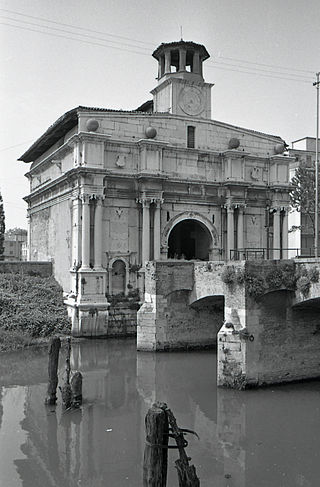
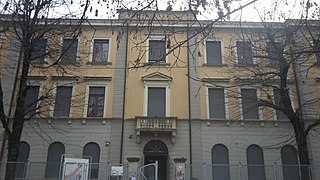
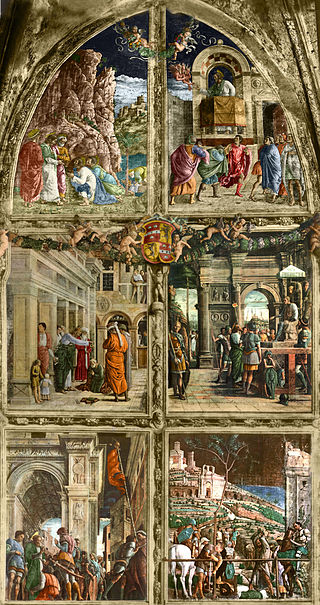
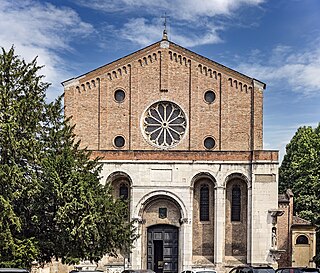
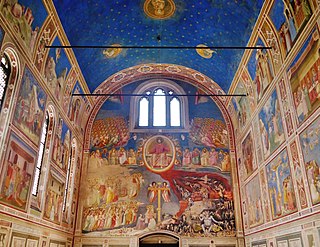
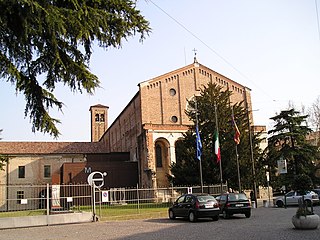

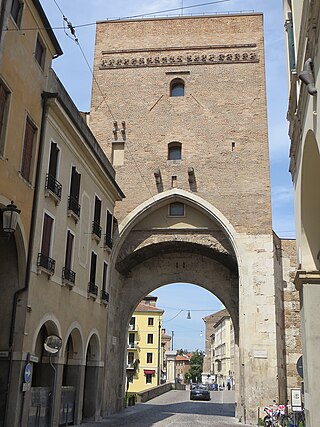
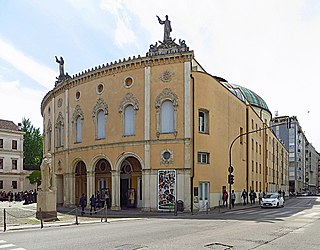
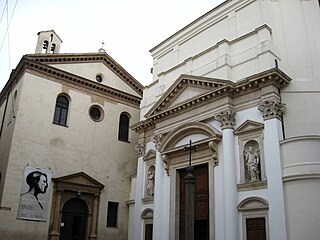

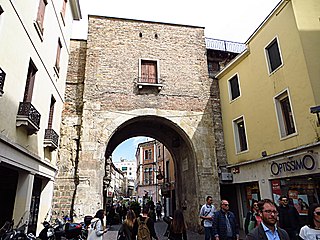
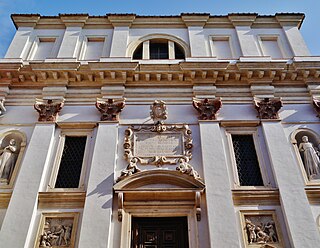
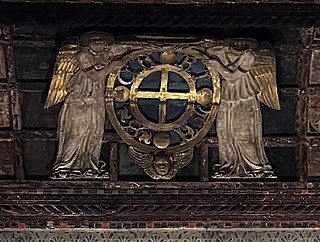
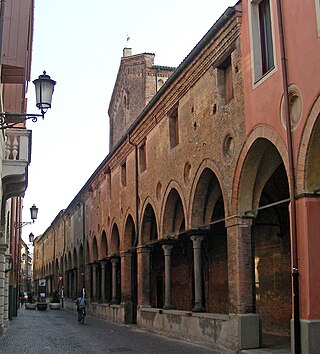
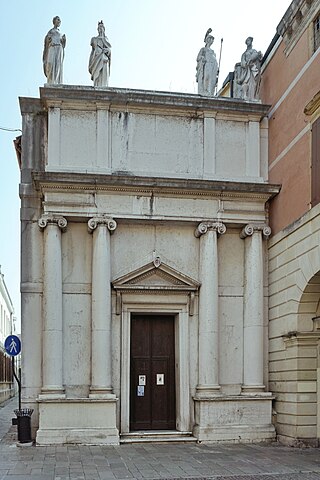
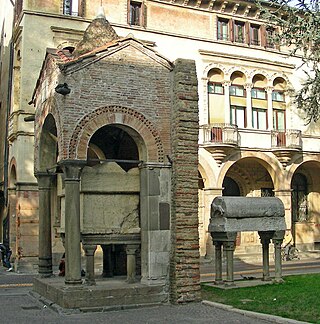
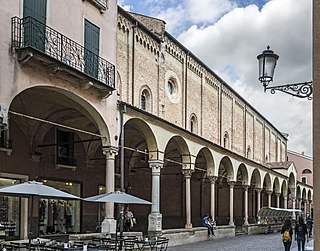
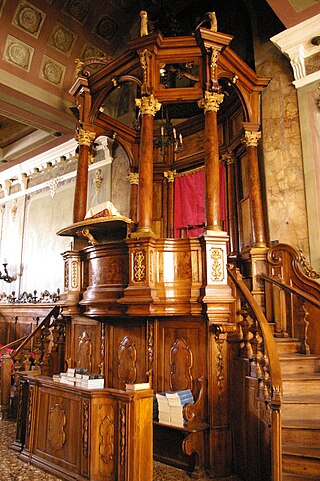
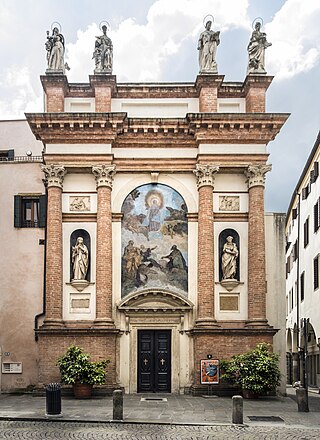
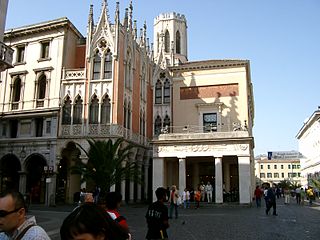
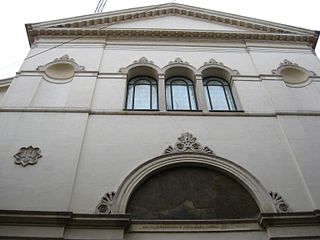
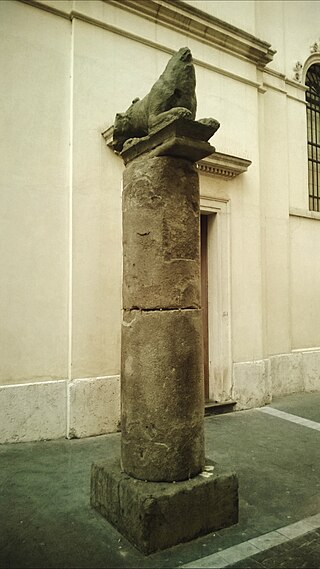
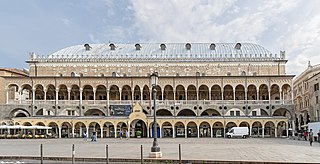
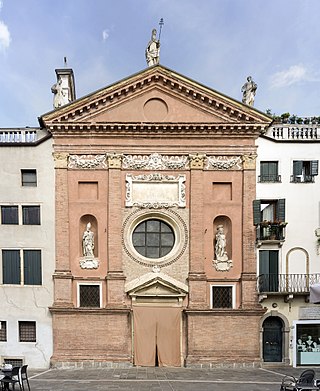
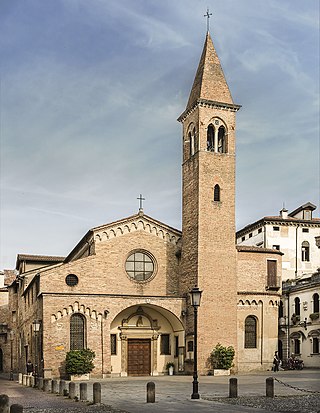
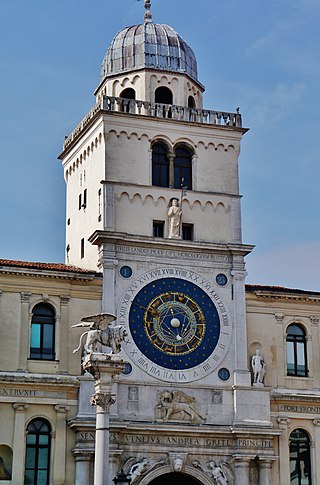
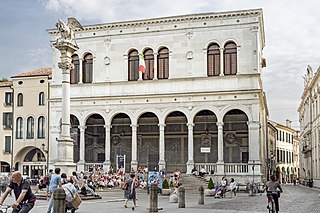
.jpg)
